 |
 |
 |
| |
Monogram Analysis: Loss of Raltegravir Susceptibility in Treated Patients is Conferred by Multiple Non-overlapping Genetic Pathways
|
| |
| |
Reported by Jules Levin
XVII HIV Drug Resistance Workshop
June 10-14, 2008
Sitges, Spain
Abstract 7
S Fransen1, S Gupta1, R Danovich2, D Hazuda2, M
Miller2, M Witmer2, CJ Petropoulos1, NT Parkin1, and
W Huang1.
1Monogram Biosciences,
South San Francisco CA USA.
2Merck Research Labs,
West Point, PA USA.
BACKGROUND
· Raltegravir (RAL) was approved in late 2007 and is the first integrase strand transfer inhibitor in this new class of anti-retrovirals.
· N155H and Q148R(H/K) have been identified as signature resistance mutations for RAL; Y143C(R) may also represent signature mutations.
· Additional drug selected mutations that confer reduced susceptibility to RAL have been described, such as E92Q and G140S(A).
· In this study we have investigated the genetic linkage of N155H and Q148R(H/K) and the effect of these mutations alone and in combination with other resistance-associated mutations on RAL susceptibility and IN replication capacity (IN RC) in subjects failing RAL.
AUTHOR CONCLUSIONS
· RAL resistance mutations N155H and Q148R(H/K) are selected via multiple, non-overlapping genetic pathways.
· Resistance mutations selected by RAL are associated with reductions in IN RC.
· Combinations of resistance mutations can have differential effects on RAL susceptibility and IN RC depending which amino acid is selected at a particular
position.
· The findings of this study provide insight into genotypic and phenotypic markers of RAL resistance, which can assist clinicians in the use of this new class of HIV inhibitors in the clinical setting.
METHODS
· A subset (n=69) of virologic failure samples from the BENCHMRK Phase III trials was included in this study.
· HIV IN clones were isolated from 11 paired baseline and virologic failure samples.
· Susceptibility to RAL was measured using PhenoSense Integrase, which is a modification of the PhenoSense assay incorporating patient derived C terminal RT and full-length IN sequence. IN RC is a measure of luciferase activity relative to a reference virus (NL4-3).
· Site directed mutants in IN were constructed in a IIIB backbone.
· Sequencing of IN populations and clones was performed; amino acid differences compared to NL4-3 are reported.
RESULTS
· Of the 69 subjects studied here, 9 contained mutations at both position 155 and 148, and only mixtures were observed at these positions (Fig 2).
· Clonal analysis confirmed that N155H and Q148R(H/K) were selected independently (Fig 3).
· E92Q and G140S(A) were linked with N155H and Q148R(H/K) , respectively (Fig 4).
· Although rare, clones with E92Q and no RAL signature mutations, displayed reduced RAL susceptibility.
· In patients failing RAL treatment with signature mutations N155H or Q148R(H/K), with or without other known resistance mutations, phenotypic resistance to RAL was observed (Fig 5).
· IN RC was reduced in viruses from RAL treatment failures in the majority of samples tested (Fig 6).
· The addition of E92Q to N155H increased resistance to RAL and decreased IN RC, relative to N155H alone (Fig 7).
· The effect of G140S in combination with Q148R(H/K) on RAL susceptibility and IN RC depended on which amino acid was studied.
-- RAL susceptibility was further reduced in G140S+Q148R or H double mutants, relative to the single mutant.
-- G140S+Q148K was more susceptible to RAL than Q148K alone.
-- IN RC did not change in the G140S+Q148R mutant relative to Q148R alone, however G140S+Q148H or K both showed an increase in RC, compared to Q148H or K alone (Fig 8).
· The addition of E138K or G140S(A) to viruses with position 148 mutations may have different effects on RAL susceptibility and IN RC, depending on the amino acid is present at position 148 (Fig 9).
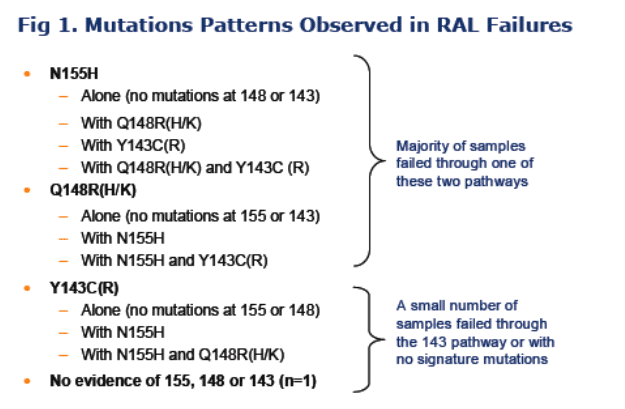
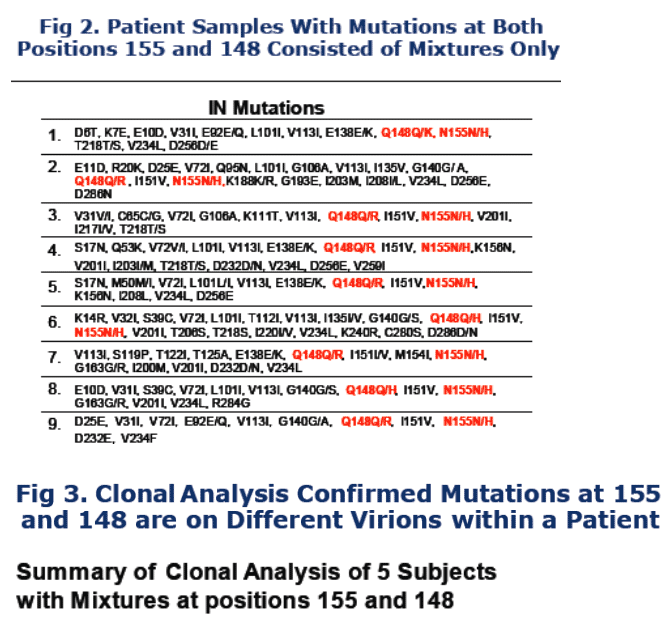
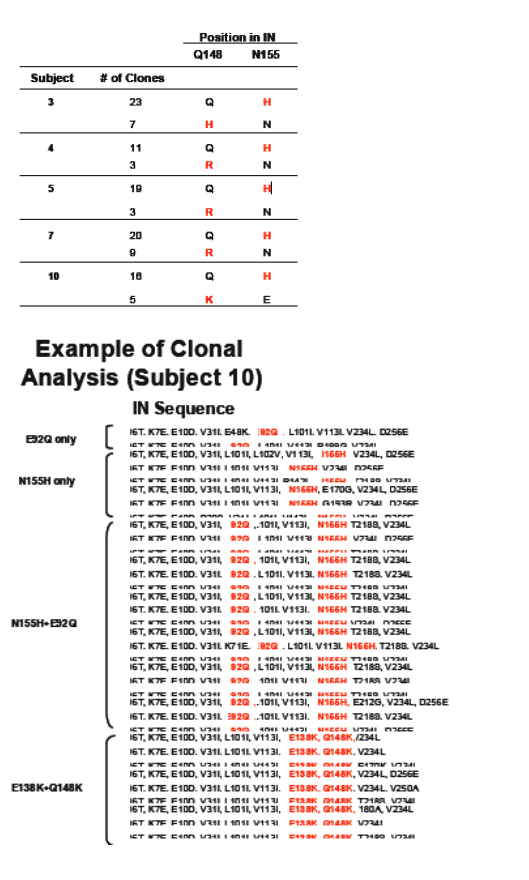
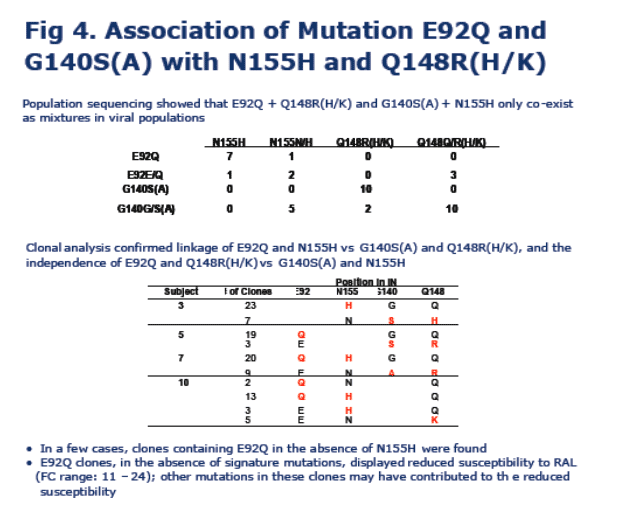
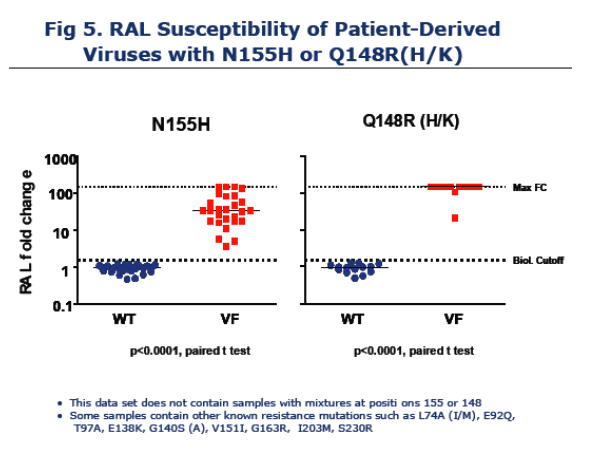
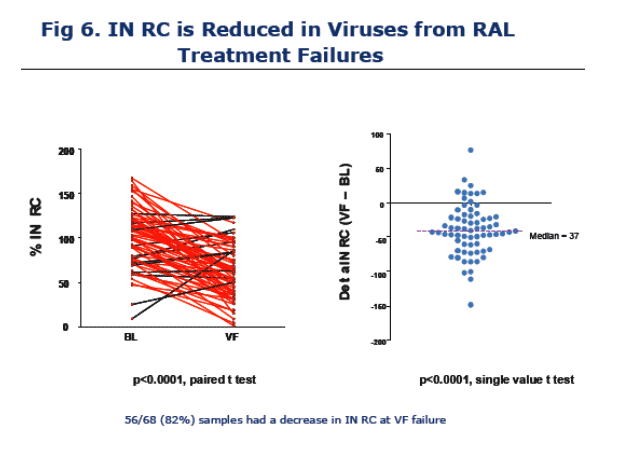
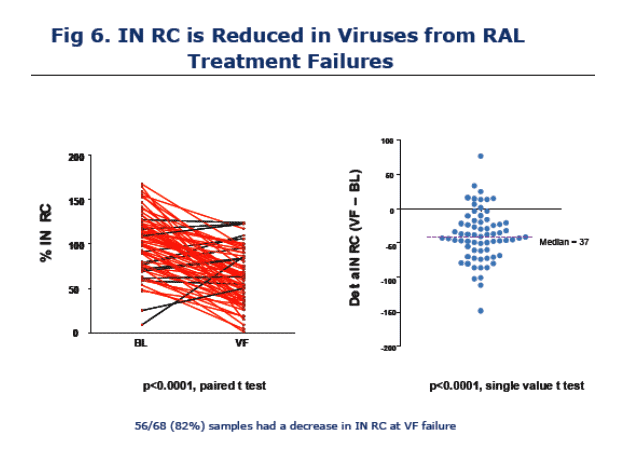

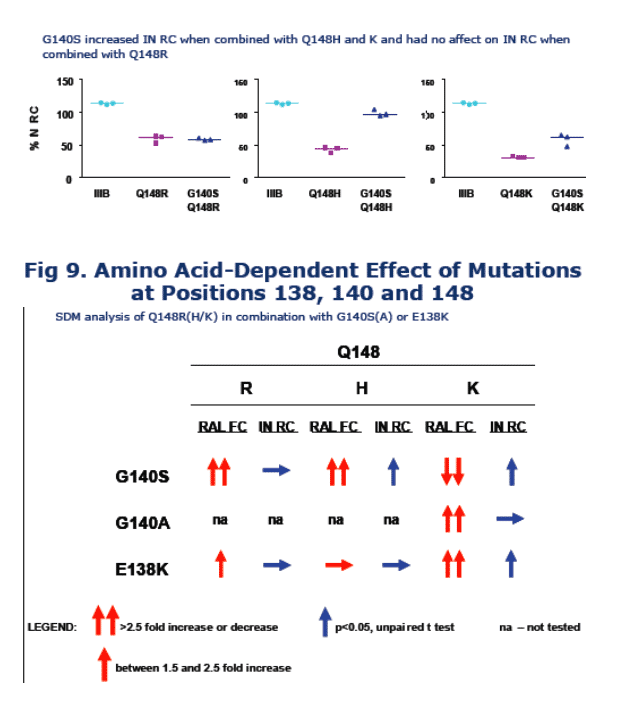
|
| |
|
 |
 |
|
|